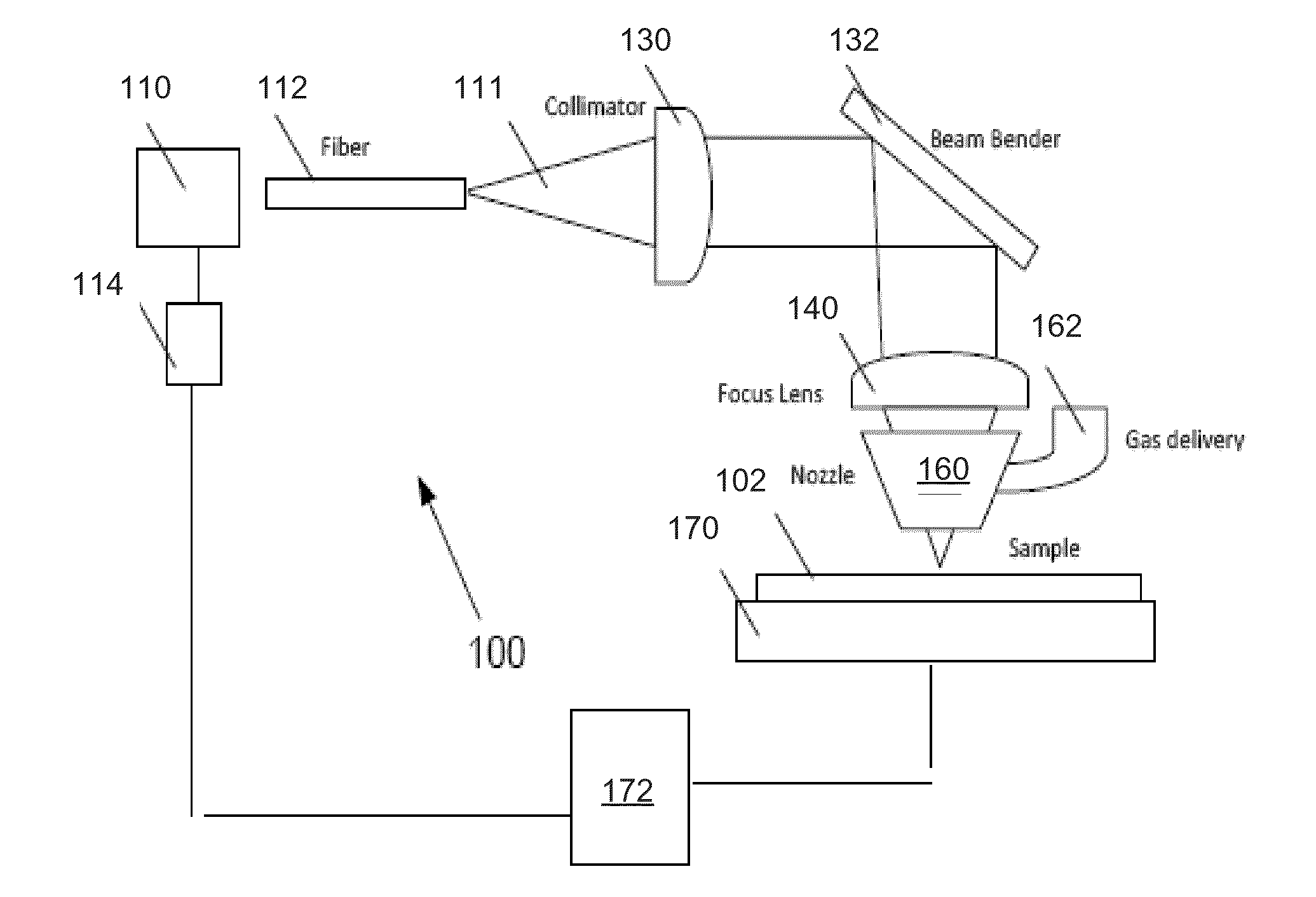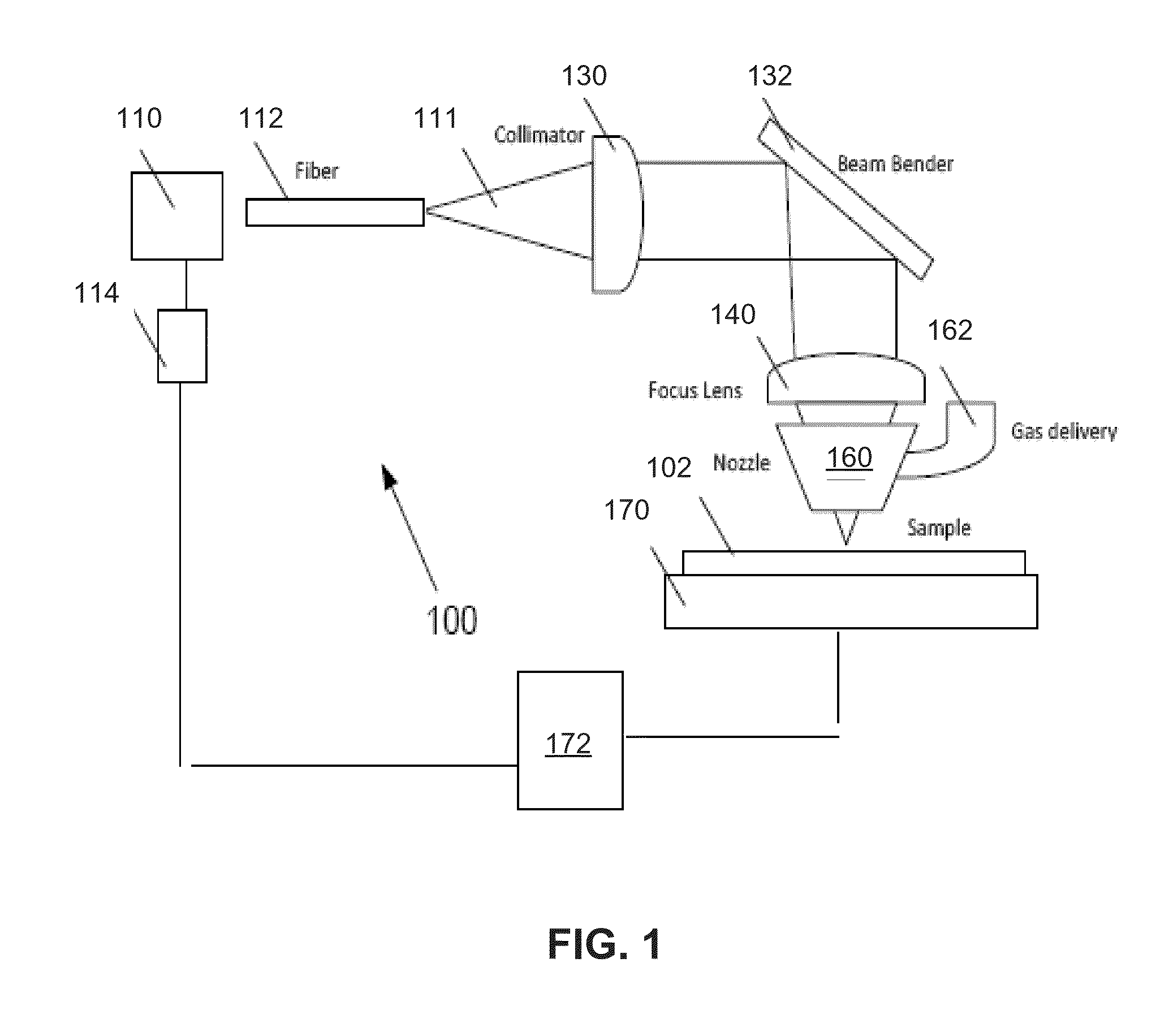System and method for laser beveling and/or polishing
a laser beveling and polishing technology, applied in the field can solve the problems of low production yield, and affecting the quality of laser processing materials, so as to reduce the edge defects and reduce the defects
- Summary
- Abstract
- Description
- Claims
- Application Information
AI Technical Summary
Benefits of technology
Problems solved by technology
Method used
Image
Examples
Embodiment Construction
[0032]Laser processing of hard dielectric materials, consistent with embodiments of the present disclosure, may include cutting a part from a hard dielectric material using a continuous wave laser operating in a quasi-continuous wave (QCW) mode to emit consecutive laser light pulses in a wavelength range of about 1060 nm to 1070 nm (hereinafter “QCW laser”). Cutting using a QCW laser may be performed with a lower duty cycle (e.g., between about 1% and 15%) and in an inert gas atmosphere such as nitrogen, argon or helium. Laser processing of hard dielectric materials may further include post-cut processing the cut edges of the part cut from the dielectric material, for example, by beveling and / or polishing the edges to reduce edge defects. The post-cut processing may be performed using a laser beam with different laser parameters than the beam used for cutting, for example, by using a shorter wavelength (e.g., 193 nm excimer laser) and / or a shorter pulse width (e.g., a picosecond las...
PUM
| Property | Measurement | Unit |
|---|---|---|
| angle of incidence | aaaaa | aaaaa |
| wavelength | aaaaa | aaaaa |
| wavelength | aaaaa | aaaaa |
Abstract
Description
Claims
Application Information
 Login to View More
Login to View More - R&D
- Intellectual Property
- Life Sciences
- Materials
- Tech Scout
- Unparalleled Data Quality
- Higher Quality Content
- 60% Fewer Hallucinations
Browse by: Latest US Patents, China's latest patents, Technical Efficacy Thesaurus, Application Domain, Technology Topic, Popular Technical Reports.
© 2025 PatSnap. All rights reserved.Legal|Privacy policy|Modern Slavery Act Transparency Statement|Sitemap|About US| Contact US: help@patsnap.com



